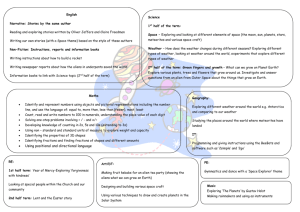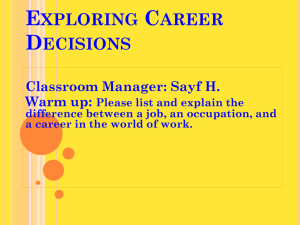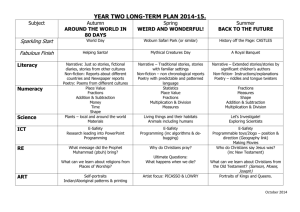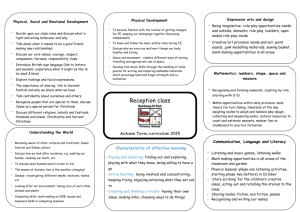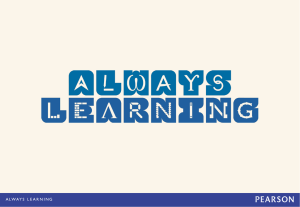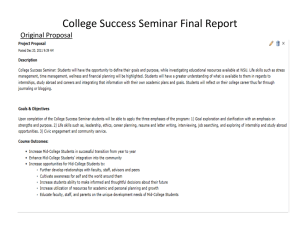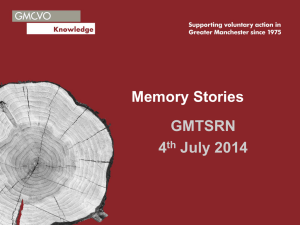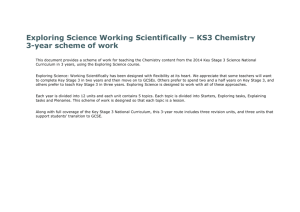District Overview In Exploring PLTW Engineering, students engage
advertisement
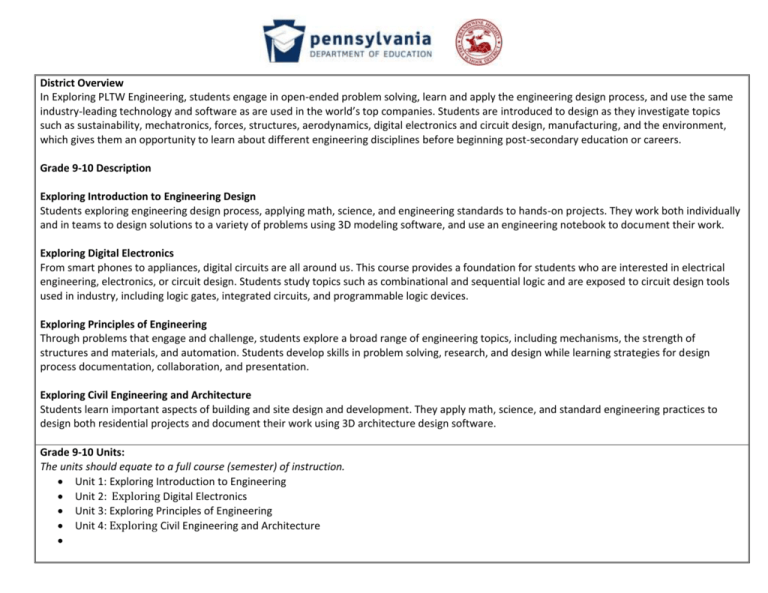
District Overview In Exploring PLTW Engineering, students engage in open-ended problem solving, learn and apply the engineering design process, and use the same industry-leading technology and software as are used in the world’s top companies. Students are introduced to design as they investigate topics such as sustainability, mechatronics, forces, structures, aerodynamics, digital electronics and circuit design, manufacturing, and the environment, which gives them an opportunity to learn about different engineering disciplines before beginning post-secondary education or careers. Grade 9-10 Description Exploring Introduction to Engineering Design Students exploring engineering design process, applying math, science, and engineering standards to hands-on projects. They work both individually and in teams to design solutions to a variety of problems using 3D modeling software, and use an engineering notebook to document their work. Exploring Digital Electronics From smart phones to appliances, digital circuits are all around us. This course provides a foundation for students who are interested in electrical engineering, electronics, or circuit design. Students study topics such as combinational and sequential logic and are exposed to circuit design tools used in industry, including logic gates, integrated circuits, and programmable logic devices. Exploring Principles of Engineering Through problems that engage and challenge, students explore a broad range of engineering topics, including mechanisms, the strength of structures and materials, and automation. Students develop skills in problem solving, research, and design while learning strategies for design process documentation, collaboration, and presentation. Exploring Civil Engineering and Architecture Students learn important aspects of building and site design and development. They apply math, science, and standard engineering practices to design both residential projects and document their work using 3D architecture design software. Grade 9-10 Units: The units should equate to a full course (semester) of instruction. Unit 1: Exploring Introduction to Engineering Unit 2: Exploring Digital Electronics Unit 3: Exploring Principles of Engineering Unit 4: Exploring Civil Engineering and Architecture Subject: Exploring Grade: 9-12 Suggested Timeline: 90 periods (42min.) Engineering(742-1) Unit Title: Exploring Civil Engineering and Architecture Unit Overview/Essential Understanding: Students learn important aspects of building and site design and development. They apply math, science, and standard engineering practices to design both residential and commercial projects and document their work using 3D architecture design software. Unit Objectives: - How would you decide the style of roof to use when designing a house? List at least three considerations. - Is it important for an architect to know the details of how residential buildings are constructed in order to design a house? Explain. - How has the use of 3D modeling software affected the design and construction industry? Focus Standards Addressed in this Unit: 1. Selecting resources involves trade-offs between competing values, such as availability, cost, desirability, and waste. (2.9-12.Z) Students will develop the abilities to use and maintain technological products and systems. 6-8 2. Use information provided in manuals, protocols, or by experienced people to see and understand how things work. (12.6-8.H) 3. Use computers and calculators in various applications. (12.6-8.J) Important Standards Addressed in this Unit: Quantities -Reason Quantitatively And Use Units To Solve Problems. 1. Define appropriate quantities for the purpose of descriptive modeling. (N.Q .2) 2. Choose a level of accuracy appropriate to limitations on measurement when reporting quantities. (N.Q .3) Geometry Modeling With Geometry -Apply Geometric Concepts In Modeling Situations 2. Apply concepts of density based on area and volume in modeling situations (e.g., persons per square mile, BTUs per cubic foot).* (G.MG.2) Misconceptions: You will discover that students will need reinforcement in understanding how the transfer of force is moved from the roof to the footer. Concepts/Content: 1. How would you decide the style of roof to use when designing a house? List at least three considerations. 2. Is it important for an architect to know the details of how residential buildings are constructed in order to design a house? Explain. 3. How has the use of 3D modeling software affected the design and construction industry? Competencies/Skills: It is expected that students will: Identify typical components of a residential framing system. •Recognize conventional residential roof designs. •Model a common residential roof design and detail advantages and disadvantages of that style. •Use 3D architectural software to design, model, and document a small building. Description of Activities: Utility Shed Design Sketching is an important skill to communicate design ideas, particularly when brainstorming. Today’s final designs for buildings and structures are almost exclusively created and stored electronically. In this way designs can be shared, updated, and improved more quickly and efficiently. The first CAD (Computer Aided Design) program developed was Sketchpad. It was developed by a graduate student at MIT in the early 1960s. His software utilized a light pen to draw on the computer monitor. Procedure In this activity you will use Autodesk Revit 2015 to create a utility shed. You will produce a drawings to document your design in Part 2 of the activity. Assessments: Principles of Engineering Performance-Based Assessment Interdisciplinary Connections: Additional Resources: 1 – Demonstrate an ability to Bouras Industries, Inc. (n.d.). United steel deck. Retrieved May 30, 2009, from http://www.njbdesign and conduct experiments, united.com/usd.htm as well as to analyze and interpret data. Cadazz. (2004). CAD software: History of CAD CAM. Retrieved May 13, 2008, from http://www.cadazz.com/cad2 – Demonstrate an ability to software-history.htm. apply knowledge of mathematics, science, and Federal Emergency Management Agency (FEMA). (n.d.). Map service center. Retrieved May 30, 2009, from engineering. http://msc.fema.gov/webapp/wcs/stores/servlet/FemaWelcomeView?storeId=10001&catalogId=10001&langId=3 – Demonstrate an ability to use 1 the techniques, skills Feirer, J.L. (1997). Carpentry and building construction. New York, N.Y: Glencoe, McGraw-Hill.

